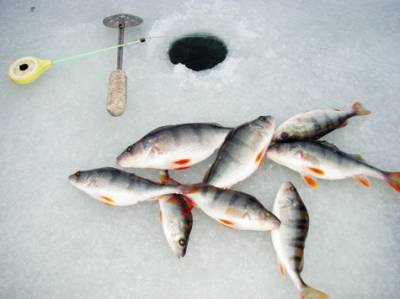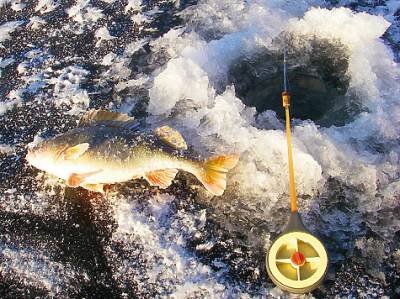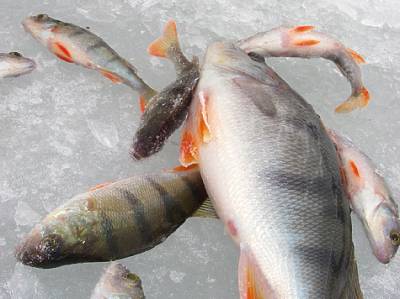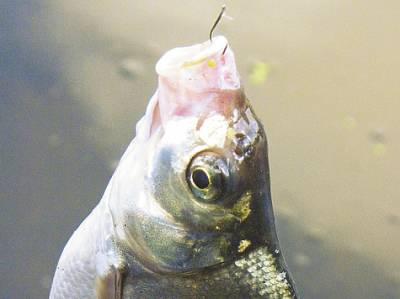
Today I return to the most important question of the jigs. No matter the conditions in which they are used, in my opinion, it is important to decide the same question. Do we want to use a jig in this particular case, as a carrier of natural bait or the nozzle, or want to make separate jigs bait. Second, I think, the best application, because it allows her to significantly expand its own capabilities.
To the jig was the bait by itself, it must do something a certain way to move and their size, shape, color, vibrations, and often taste, to create the illusion of fish food. It is worth noting that this does not need to jig copied some of the usual and natural food. Some of the above qualities of the bait triggers the fish, if not for a strike, then studying and testing the taste. This interest can be realized in the bite, but maybe not.
In fact, a fundamental difference between the jig with natural bait on the hook and without it is that they imitate totally different food objects. Jig baited first attracted attention by its movement, and the bait on the hook becomes the main factor provoking a strike. So the game can be inconsistent, with stops, accelerations and decelerations. That is, bloodworm or maggot on the hook makes up for almost all flaws in the technique of fishing. One way or another, but a certain rhythm of movement the fish can catch this bait.
With a baitless jig is not. The game must be very precise, with a certain amplitude, frequency and speed of the lifting jig. In practice, experienced anglers and the fishing tackle of bait are exactly the same and rarely change the rhythm for one transaction, but in baitless fishing is especially important. Another very important exact repeatability effective transaction. Once achieved productive posting, you need to memorize and exactly repeat in the future. Perhaps therein lies the main problem with the development of baitless fishing. In order to do the wiring in a certain rhythm, and without crashing in the game, we need not only “a steady hand”, but also an appropriate tackle — fishing rod, a nod, a jig with fishing line and that is very important is the fit of the angler. It is important, how to sit, keep the bait close to the tackle from the wind. That is important, not the lure, as many believe, and the total fishing technique and excellent “posed” hand.
Almost any jig you can make baitless, and Vice versa. It’s all in the ratio of the jigs and that is its hook. The smallest lures with a bait on the hook, even in the form of the larvae of a small moth, it is very difficult to give self-oscillations, tempting the fish. Only the bait on the hook, and the lure remains its relatively passive media. Once we remove the hook bait, so immediately turn to the option of baitless fishing. But that’s not the best option because the jig with the body size of 2 mm can “shake” only to a shallow depth, when the resistance of the fishing line still allows you to maintain a rigid interconnection of nod with a jig.
Increase the weight of the lure, and when its dimensions become comparable to small bloodworms, the “mugwort” or small maggots, it becomes guaranteed managed. We can give the right game, even if the hook is the larva of a large moth. As baitless option is what you need. Of course, if you choose the right weight of lure and fishing line in accordance with the depth and current. That is, for each bait there is, first, the minimum weight, when you can give the bait some movement. Secondly, the larger the increase in weight, the more can be a game of bait. In my opinion, this is the factor most often overlooked.
For example, on the same fishing trip it turns out that one successfully catches a clump of feather dusters, and a neighbouring fisherman bite on only one cylinder. Both play the bait, making transactions at the same depth. But to argue in this case is not about. The first jig is more severe and she is able to “disperse” the larger bait.
Again, if the fish clearly prefer the nozzle on the hook, the smaller and lighter the jig the better.
In the case of baitless fishing additional items on a hook in the form of jacks and beads diversify the vibrations of the lure and its color can cause additional interest to the fish. By the way, according to my personal observations, colors and overall great value have no. More so the faith of the angler in the tackle. Many times, I experimented a simple way. Namely, given a jig (the rocker, spinner, vibrohvost) less fortunate angler, and he began to catch. It is very important as more convincing to announce that this lure repeatedly proven and the most that neither is “efficient” here and now. The most interesting thing is that the “old” lure you could catch exactly the same, but it wasn’t in the angler of faith.
Additional elements on the hook baitless jigs should not exceed some size and weight. When the resistance in water becomes comparable to the resistance of the jig, the game is somewhat unpredictable. To save the game and maximize the fluctuations, you need to make additional elements not only moves freely on the hook (or on a scaffold above the jig), but was moving slower or faster than the jig.
This principle is realized in the so-called, now you can say “classic” nymphs. An additional element in them is a “wing” of thin cut cambrica relatively large diameter. The weight of the wing is minimal, and the resistance is large. During the game generates powerful vibrations from a small lure with significant frequency. The main subtlety of the game the nymph lies in its swinging, that is, in the acceleration to a state of resonance between the jig and the wing. Then the wing is not static, but fluctuates rapidly or “runs” in the hook grip, that depends on how to rock. I needed a very high quality gear in General.
A special case are baitless jigs minimum size. The very first on the ice and in the period when the ice starts to flow melt the water in the ponds and quarries there is a good chance to catch not only perch but also roach. And manage to do it with the jig in the smallest size. It’s not even a jig, and the hook of the twentieth rooms with microscopic soldering.
To hide the hook and add a bit more weight on the hook to put on the most delicate cambric. Length cambrica is chosen so as to cover the shank of the hook. From personal experience, the best color is white or light yellow. To play such bait even using fishing line 0.07 mm is possible only on the depth of one meter (together with ice). The game is sluggish and more like a slow rocking with a relatively rapid rise of 10-15 cm On the same rig, but with a jig, which is on the shank of the hook and the two exchange no cambrica, I successfully fishing at the mouths of streams. Most importantly, to “push” the bait under the ice, and plays it over itself.
Thus, any infusion on a hook mormyshki inevitably changes her game. In some cases, when the bait is used or the aim is to diversify the vibrations of the lure, that’s good. But hasty outfitting the jig with excessive number of jacks or beads can make the bait too bulky. Passion colors may attract the attention of fish, but this does not mean that it will food interest.
The biggest problem is in the design of all gear in General, according to the fish size, the presence of flow and depth on one side. On the other hand: this is the minimum diameter of the line, the size of the jigs, attachments or bait, the line nod. Well, technique tackle. You need to catch as often as possible and not to rush between the jig, the float and relizami.








